You asked for it! Let’s dive into some examples so you can see a deep point of view rewrite in action!
From time to time I ask my audience what kind of content would help them learn best, and every single time I get the same answer: examples. I dove through the cobwebs into a couple of manuscript files on my hard drive written in the early 2000s (back when I thought I had deep pov figured out and these manuscripts prove I had wildly missed the mark).
I often go over these kinds of examples in the Facebook group, but I’m moving the best discussions to the blog and expanding them. Today’s gem:
Original: The fire truck screeched to a halt and firemen surrounded the wreck. Laurel stood to one side, watching. She didn’t know what to do.
What do you think of those lines? Are you drawn into the story? Are you leaning in to learn more about this character, do you empathize or connect with her?
(It’s OK if your answer is no.)
What Isn’t Working Or Undercuts The Effect Deep POV Aims To Create?
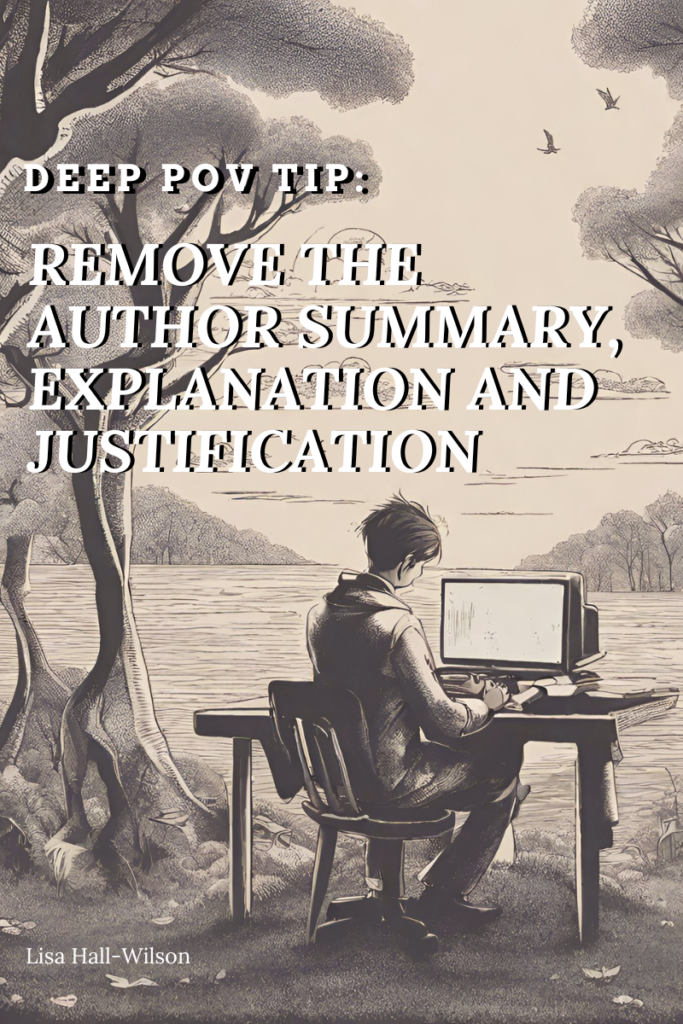
There’s some author intrusion creeping into these sentences. The goal of deep POV is to remove the author/narrator voice entirely, because we want to immerse the reader in the lived experience of the pov character. We want to limit or eliminate this outside voice that summarizes, explains or justifies the character’s feelings, thoughts or actions. Don’t summarize what the character sees or explain why it’s significant to them, SHOW me what they see, SHOW me it’s significance because of the character’s emotional reaction, thoughts, and choices.
Can you see the author voice?
Watch for filter and emotions. Above, the red flag words for author intrusion are “watch” and “know”. So, I’ll need to recast the sentences so that raw information is coming to the reader directly from the character instead of filtered (summarized, explained, justified) by the author voice.
Immerse The Reader In The Setting
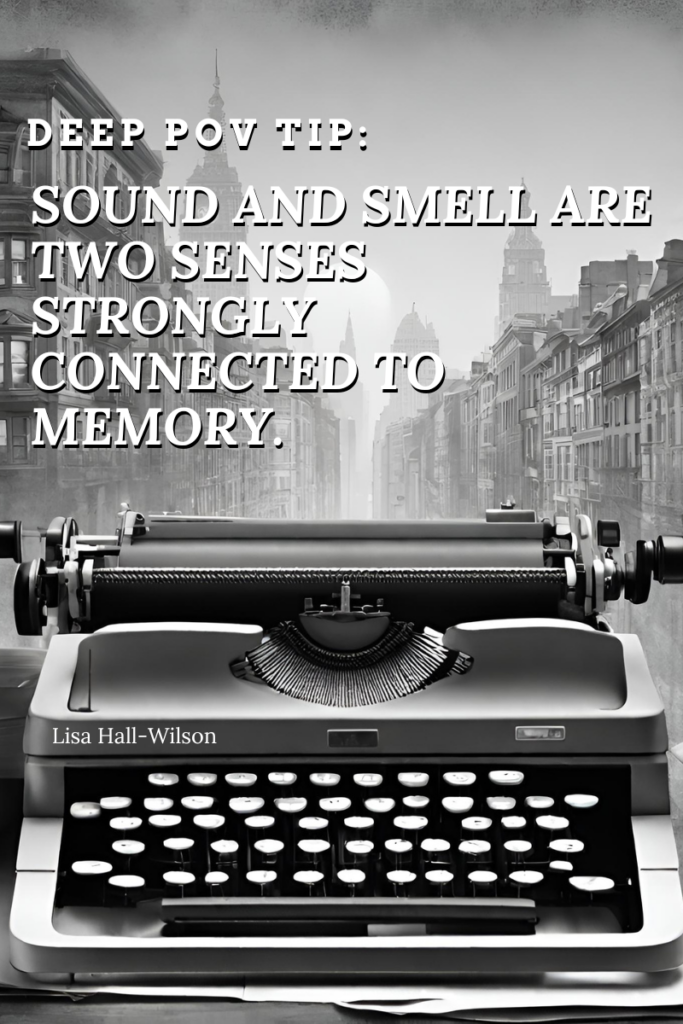
The character is very passive in these two sentences. Laurel is standing to the side, watching. Watching what? What’s going on? What setting and sensory details can we add to help the reader feel like they’re right there next to Laurel in this moment?
First, decide what this scene needs to do for your story. This is the inciting incident for this novel, so this moment needs to be BIG, right. If it wasn’t that important, if she was a casual bystander with no emotional connection to what’s going on, her perception will be very different than if she has some emotional stakes in what’s happening here.
Because I need this scene to be BIG, I hope to capture moments in this scene that this character is going to recall throughout the whole novel. Her memory of this, needs to create a visceral emotional response every time she recalls it. We know that sound and smell are two senses very closely tied to memory, so I will want to focus on those two senses. You may choose to focus on other senses depending on how important the moment is for your characters and story. I’ll want to use strong verbs that carry emotional connotation, not neutral verbs that are going to force me to use extra words to convey the mood or emotion.
With trauma memories, often what’s wrong about a setting is what sticks in our memories. What’s going on that shouldn’t be? What is off? If you’re writing a pleasant experience the character is going to recall, you might instead focus sensory details on what felt right, on what brought comfort or safety — or whatever it is that made the moment pleasant or happy for that character in that moment.
Add In Emotions And Emotional Consequences
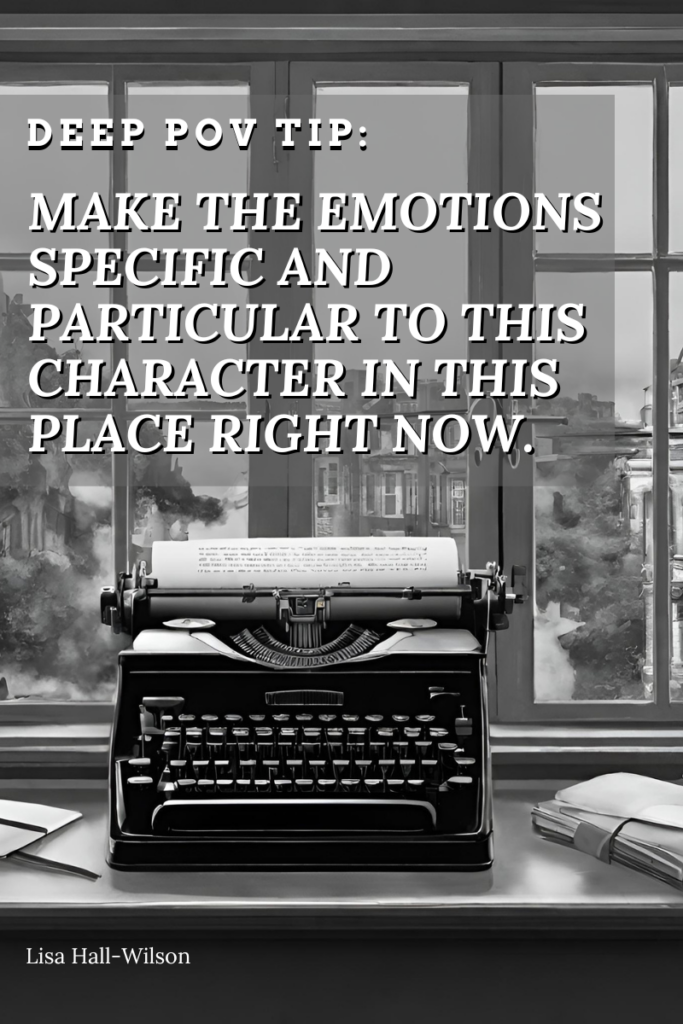
Part of the reason this moment doesn’t resonate with or capture readers, is that the character isn’t invested in it. She’s standing to one side, watching. That’s a very neutral, passive position. What are the emotional consequences of witnessing this? In this scene, there’s a woman in one of the vehicles Laurel is very good friends with — so that’s raising the emotional stakes quite a lot for her. She’s going to FEEL lots of things. Conflicting things.
Resist the temptation to reach for the easiest emotion and just go with that. Yes, there of course obvious emotions at play – shock, grief, sadness, fear. But, as a thought exercise, take the time to dive deeper and see what else is going on. Is there relief that it wasn’t her car? What are the emotional consequences of those thoughts/feelings? Was the other driver distracted or incapitated in some way — is there a history of that in her backstory? Does she have strong opinions or prejudices about those things?
The goal is to of course honor the obvious emotions, but we also want to surprise the reader. We do that by being particular and specific with the emotions we choose, and how we have the character react to and express those emotions. Emotions are universal throughout time and place, but what differs is how socially acceptable it is to feel or express particular emotions — because that carries emotional consequences.
Don’t forget, you can play with punctuation and grammar, sentence length, sentence fragments, verb choice, and other literary devices like personification, onomatopoeia, repetition, imagery, subtext, and other things to immerse the reader in the emotions of the scene.
She DID Know What To Do!
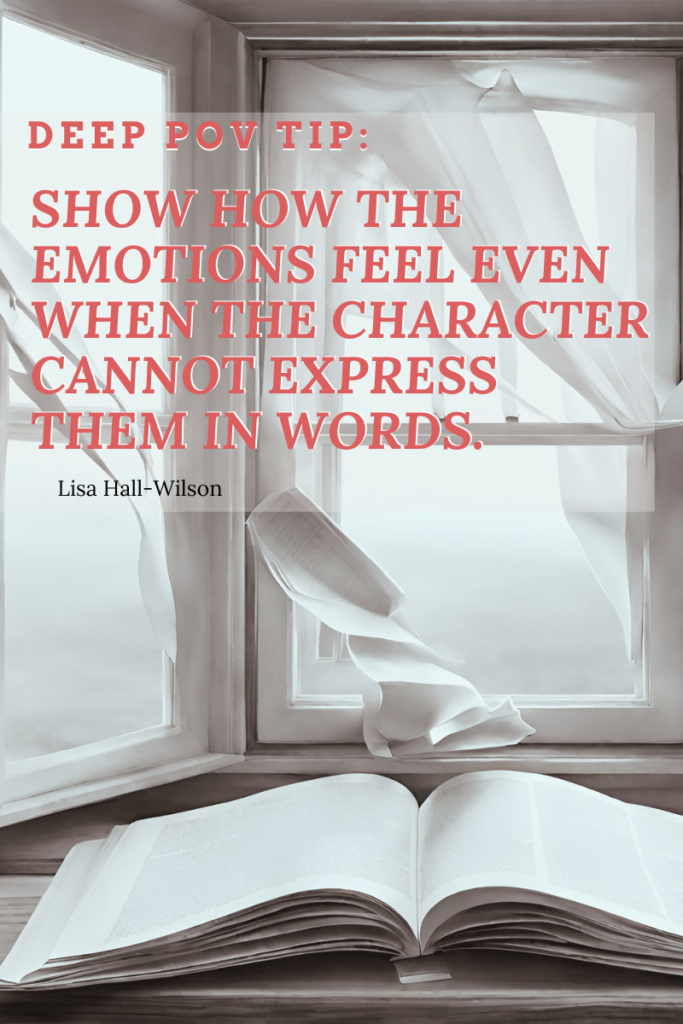
This phrase is a pet peeve, but obviously one I’ve developed since I wrote this manuscript. The reason it bugs me is because even when a character isn’t able to articulate which emotions they’re overwhelmed by, my job — your job, when writing in deep point of view is to deliver the raw emotions to the reader — not our summary or conclusion. What are they feeling?
“I dread reading scripts that had no women involved in their creation, because inevitably I get to that part where the girl turns to the guy, and she goes, ‘What do we do now?’ Now, do you know any woman, in any crisis situation, who has absolutely no idea what to do?…It’s ridiculous that a woman wouldn’t know what to do.”
Reese Witherspoon (source here)
Let’s show what the character is feeling AND why! The why is so important. The why is the glue. The why is what makes this specific and particular and creates this emotional connection with readers we’re all looking for. As written, these sentences keep the reader at arm’s length watching the scene, and gives the reader no idea why they should care, or even why this character cares.
This feels like lazy writing. I’ve avoided doing the hard work of exploring what’s causing this overwhelm. Yes, I know in a real life crisis situation, people may utter this to themselves. But, deep pov wants to get under the character’s skin and feel what they’re feeling. Which emotions are overwhelming her? Why is she overwhelmed — what’s at stake? What are the immediate emotional consequences of this moment, and as writers we know what the future consequences are so how do we build in a way to make this moment powerful, accessible and visceral now and later on?
This is the goal. She may not know how to articulate what she feels (very few people are able to articulate an emotion as they feel it), but she is feeling lots of things, those emotions are causing all kinds of thoughts and internal sensations — and those emotions want her to DO different things. That’s where internal conflict is born.
Let’s Look At The Rewrite
Now, this is my story so I know what I want this scene to do, and I know this character. You might choose to rewrite these two sentences in a completely different way. If this isn’t a key moment in a scene, you might keep the reader at arm’s length because the character has no emotional connection to this scene, or maybe they have a professional detachment? Lots to play with here, but this is what I came up to go deeper with the emotions and immerse the reader in the scene.
Original: The fire truck screeched to a halt and firemen surrounded the wreck. Laurel stood to one side, watching. She didn’t know what to do.
Rewrite: Broken glass crunched under her feet with each step. The pavement shouldn’t be crunchy. The truck’s driver flung open his door and stumbled. “I can’t be here.” The same string of words tumbled from his mouth over and over. “I can’t be here right now.”
Far off sirens grew louder. Closer. The tremor in her hands wouldn’t stop, the warm summer air now icy cold. Acrid smoke stung her nose along with the melting rubber.
The firetruck screamed around the corner towards her. She raised her arm in front of her eyes as a shield from the harsh headlights. Emergency lights bounced off the crumpled metal on the vehicles.
A fireman touched her elbow. “Are you alright?” He looked her up and down, and then pointed at her phone. “Did you call this in?”
No. No. She shook her head. Help Iris. The words wouldn’t come out. She pointed at the mangled wreck of Iris’ car. Sobbing filled the air, a gut-wrenching wail. Her throat closed up. She coughed. Couldn’t catch her breath.
More fireman walked around Iris’ car, looking in back windows, their heavy boots crunching on the glass. Always crunching. One peered into the driver’s side window, the glass smashed all over the pavement and red streaks down the door. He waved the others away.
They should be helping her. Laurel clapped a hand over her mouth, tears streaming down her face. She tugged on the fireman’s sleeve. Get her out! He just shook his head. She ran towards the car. She would help.
The fireman caught her arm and pulled her back. “There’s nothing you can do. Nothing anyone can do.”
The air sucked out of her lungs as though she’d been kicked. She doubled over. The fireman led her back to the curb, his boots crunching on the gravel.
She fisted the fireman’s sleeve. They had to help. No one was helping her.
The fireman held her back. “She’s gone.”
His voice echoed in Laurel’s head. No. Iris was right there.
Her knees buckled, but the fireman caught her and lowered her to sit on the curb.
This isn’t perfect and still needs some massaging, but this is closer to what I had hoped to convey with that first draft. Deep POV doesn’t have to add substantially to your wordcount, but going deeper with the emotions in a scene probably will — so be strategic.
How would you rewrite those two sentences into deep POV?
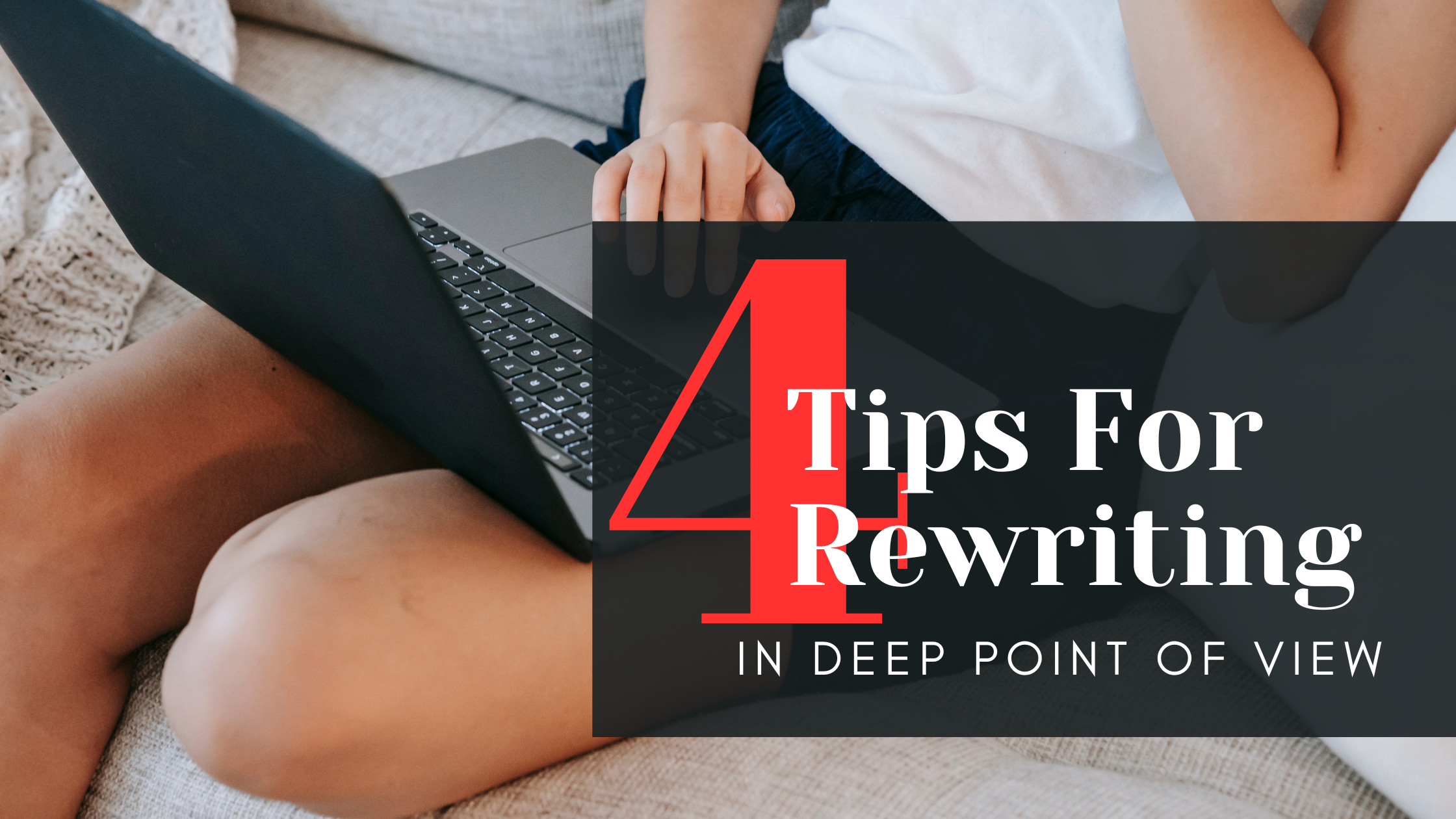
Comment